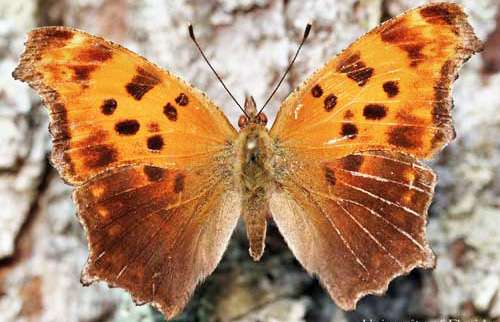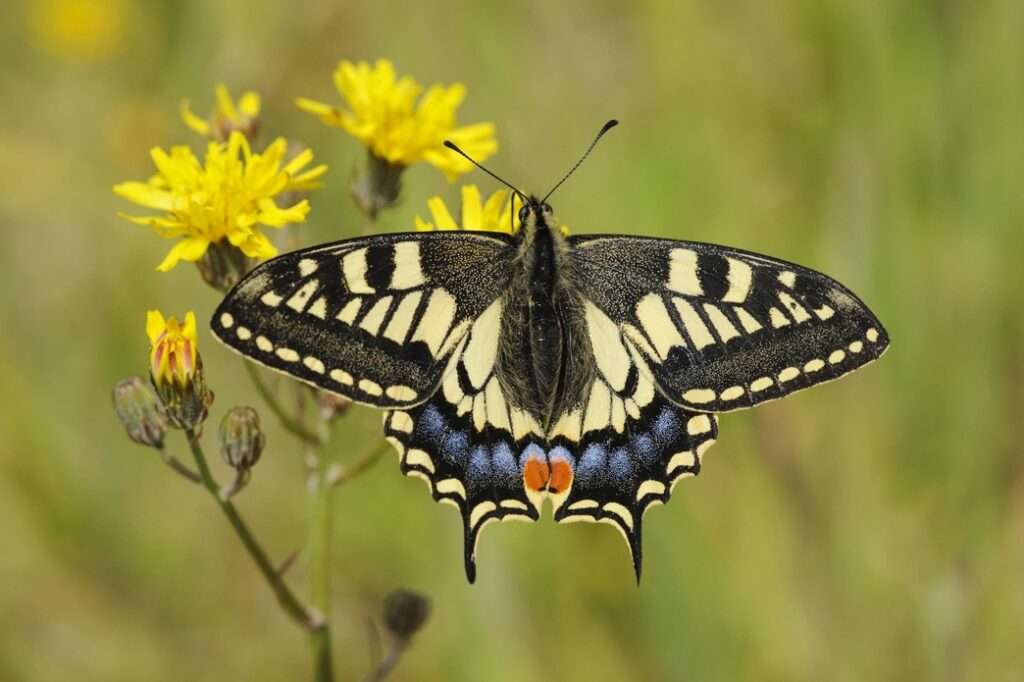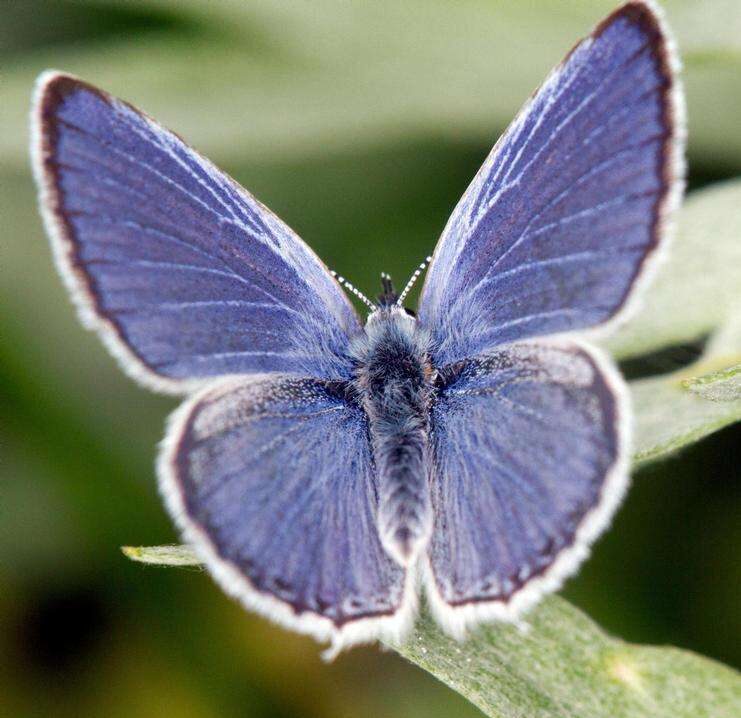
The Eastern Comma is a type of butterfly that can blend in beautifully with tree bark and dried leaves. It also has wing markings that resemble bird droppings.
Interesting Facts
- One of the rare butterflies that is expanding in range is the comma, probably as a result of climate change.
- The species enjoys tanning, whether it’s on a fencepost, woodpile, or tree trunk.
- The jagged form of comma butterflies makes them blend in with wood or vegetation when they are at rest with their wings closed.
- In forests, the comma hibernates, typically in log piles or hollow trees.
Appearance
The larva of P. comma can be a range of colors, including greenish-white or cream-white, greenish-brown or black with yellow-black-tipped spines, or red-brown with a dull pink or black head. The eggs of this species are a light shade of green. The pupa has gold or silver flecks in the saddle and is dark mottled brown (with yellower patches), brown (with a dark lateral line and greenish streaks), or white (with a little yellow-brown coloring). The small to medium-sized, irregularly notched angle wings, the concave curvature and deeply indented outer border of the forewing, and the tail-like extensions on the hindwing are characteristics of the species’ genuine butterflies. The underside of the wings is darker and closely resembles a dead leaf. The dorsal forewing and dorsal hindwing are reddish orange with black patterns. The little C-shaped silvery patch on the underside of the hind wing distinguishes Polygonia comma from the other members of the genus.

Diet
While others eat elms, willows, or hazels, some of the larvae eat nettles or hop-vine. Adults, however, only occasionally consume nectar and eat rotting fruit and tree sap.
Predators
The Eastern Comma Butterfly is preyed upon by a variety of animals, including birds, reptiles, and mammals. An Eastern Comma Butterfly has a two-week life span.
Habitat
Rich deciduous forests are connected to the Eastern Comma across its whole range, which extends from sea level to intermediate heights. It inhabits open spaces near its food plants, sunny locations along woodland roads, and forest clearings, frequently not far from structures.
Keeping as Pet
Eastern Comma Butterflies are fascinating insects, though, so people who are interested in keeping them as pets might find the expense to be well worth it.
You will need to supply an Eastern Comma Butterfly, a cage with lots of airflow, a water source, and a variety of flowers to collect nectar. They make a bad pet because they are so sensitive to handling.
Table





